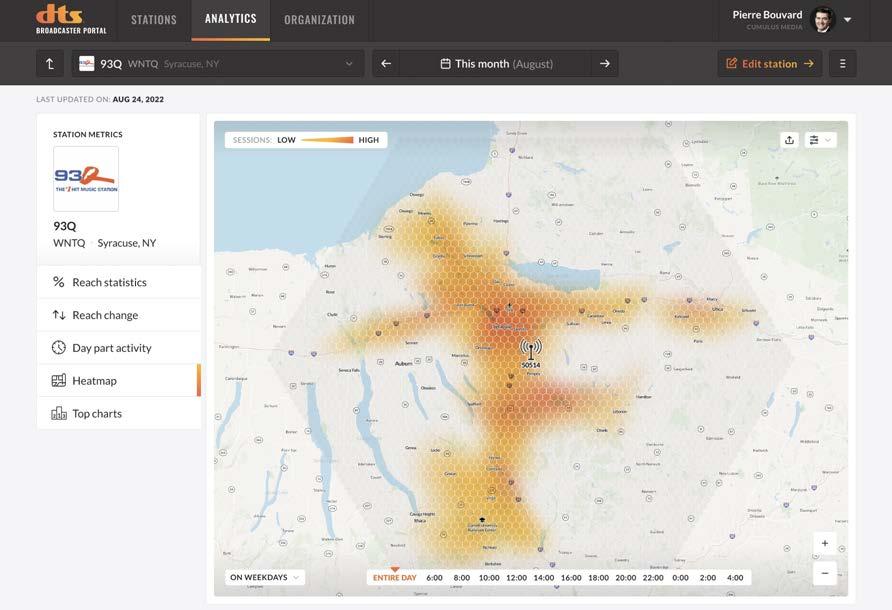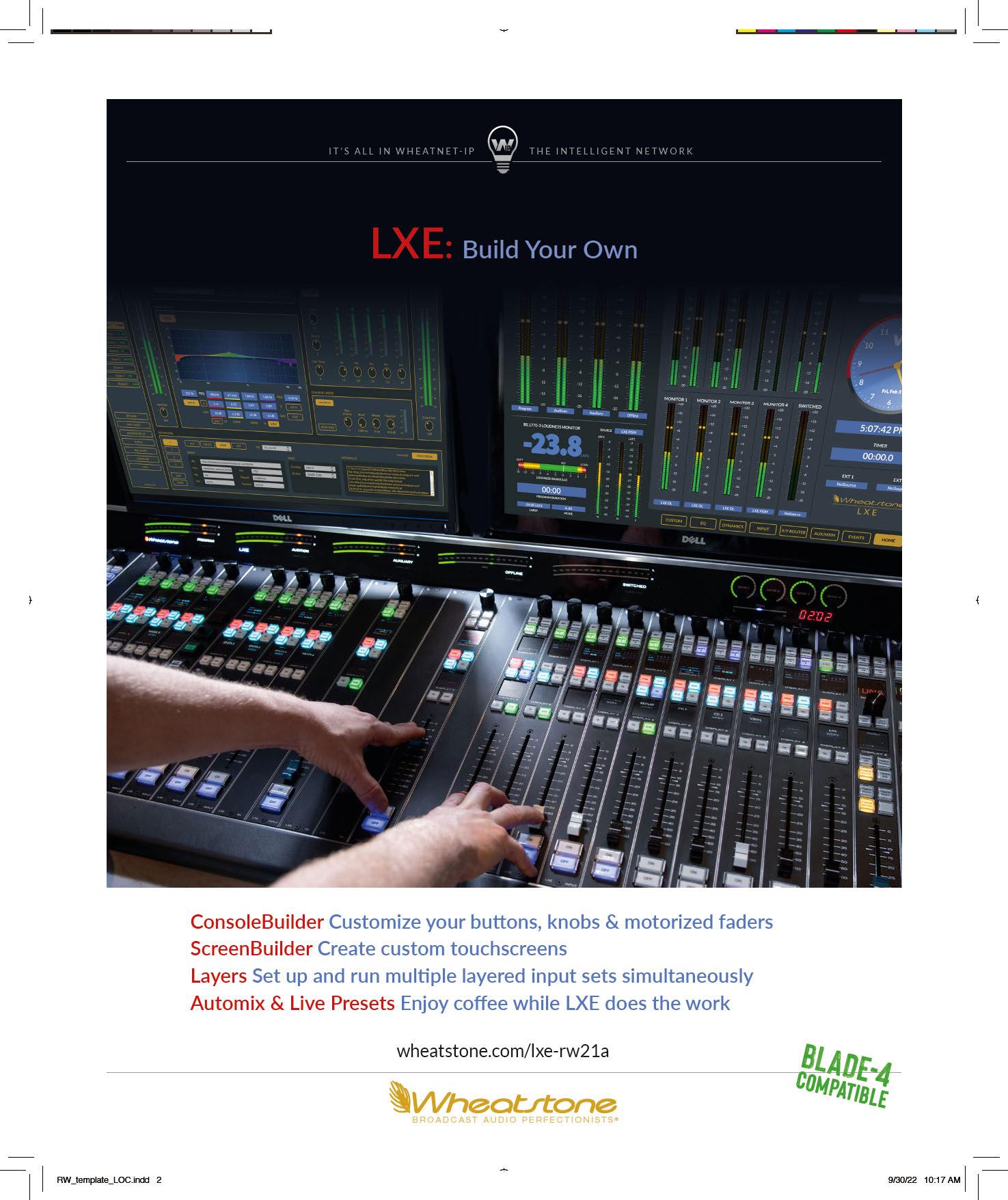
2 minute read
Continued on

Continued from page 3 connected car.” Because the listener is in a vehicle, he added, the platform avoids problems facing connected TV and online media platforms that sometimes count consumers who aren’t actually watching their screen or who aren’t even in the room.
The dashboard that Xperi will roll out in the first quarter of 2023 provides a radio manager with visual reports about patterns of listening to their own station. D’Angelo provided an example of a “heat map” (shown at right) that a station salesperson could show to a retailer to demonstrate how many cars in the client’s neighborhood are tuned to the station. He also pointed to a chart of hourly listening to a London station (not shown here) that demonstrated powerful spikes in listening when the news of the queen’s declining health and subsequent death broke.
Xperi also gave an update on its efforts to secure a foothold in the car industry. To date, Daimler and its
DTS AutoStage platform as providing big data for American radio from the connected car. ”
Mercedes vehicles are the only announced automotive partners; but D’Angelo said two more major carmakers were in the process in October of downloading DTS AutoStage in their software updates to cars in the field; those names were to be announced soon. Xperi expects to add another five carmakers in the next 12 to 24 months.
The DTS AutoStage platform is intended to be global, and D’Angelo said Xperi now has coverage in more than 100 countries, supporting over 80,000 radio stations.
As the pool of data being fed back to those stations from cars on the road scales up, he said, the system becomes more powerful. He said Xperi has recorded more than 1.78 billion tuning/location “events” globally so far — 204 million in the United States alone — despite the limited rollout of DTS AutoStage into car models so far. As more cars come online, he said, those numbers should grow rapidly.
Top A radio salesperson could use this “heat map” to show many cars in a client’s neighborhood are tuned to the station.
Above D’Angelo demonstrated the dashboard’s ability to show the impact of special events and promotions.
Participating in DTS AutoStage is free to broadcasters; the company makes its money through licensing to the carmakers. But radio stations need to provide certain information to Xperi, D’Angelo said.
That includes station data like call letters, name and logo; a streaming URL so the platform can switch from OTA reception when your broadcast signal fades or the car leaves the market; and live programming data including song title/artist metadata, the names of advertisers from ads, and DJ names and photos.
Until now Xperi has sought to educate the industry about technical aspects of the platform and its current or pending features such as seamless blending, lyrics, personalization, and recommendations for non-broadcast content that is nevertheless provided by radio broadcasters.
But the message to radio executives in New York was that the tool has vital implications for measurement and monetization.









